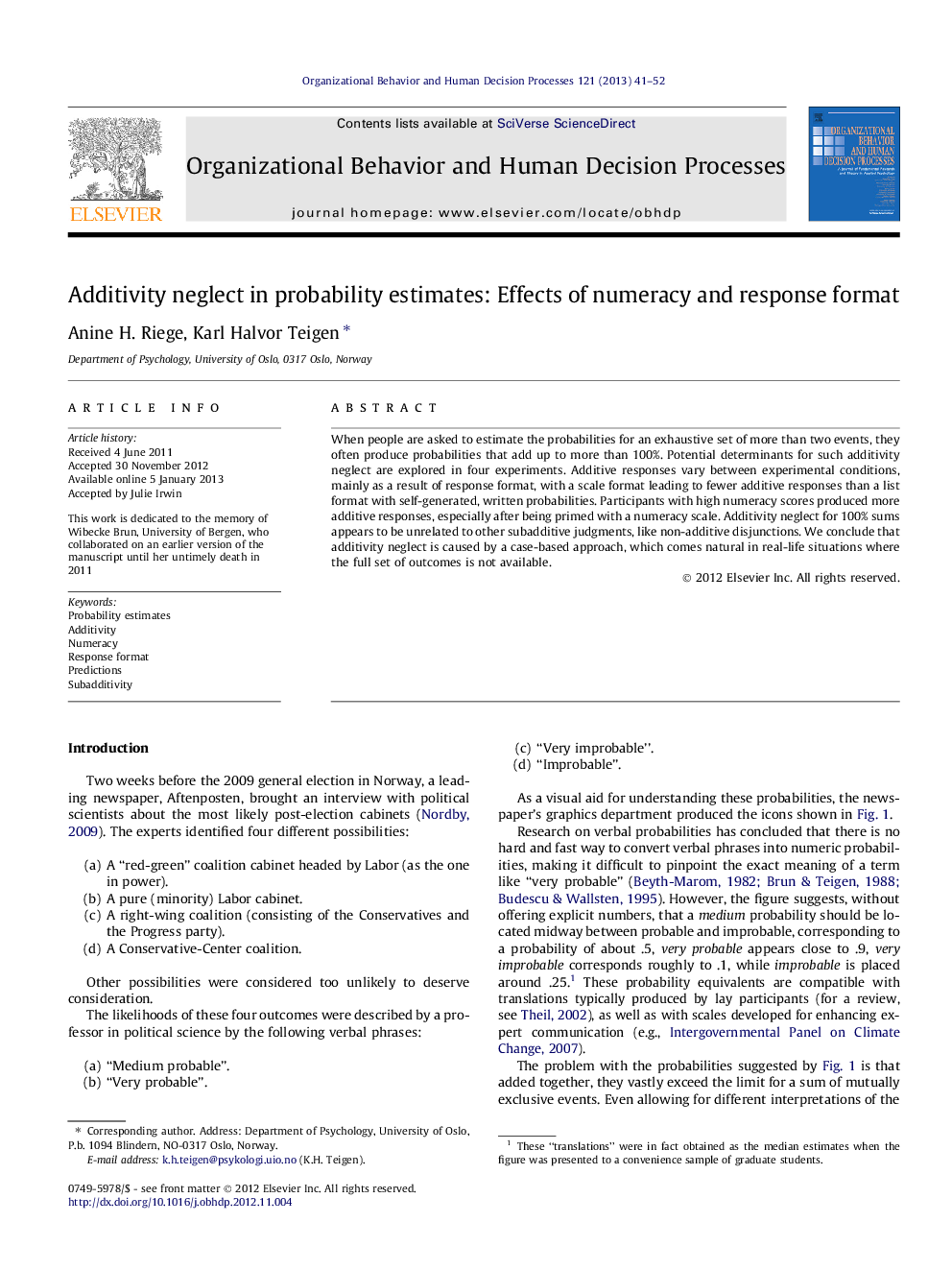| Article ID | Journal | Published Year | Pages | File Type |
|---|---|---|---|---|
| 888631 | Organizational Behavior and Human Decision Processes | 2013 | 12 Pages |
When people are asked to estimate the probabilities for an exhaustive set of more than two events, they often produce probabilities that add up to more than 100%. Potential determinants for such additivity neglect are explored in four experiments. Additive responses vary between experimental conditions, mainly as a result of response format, with a scale format leading to fewer additive responses than a list format with self-generated, written probabilities. Participants with high numeracy scores produced more additive responses, especially after being primed with a numeracy scale. Additivity neglect for 100% sums appears to be unrelated to other subadditive judgments, like non-additive disjunctions. We conclude that additivity neglect is caused by a case-based approach, which comes natural in real-life situations where the full set of outcomes is not available.
► People often neglect the additivity (100%) rule when estimating probabilities. ► Additivity depend on numeracy when participants are primed with numeracy scales. ► Written estimates are more additive than responses on a rating scale. ► Additivity neglect can be distinguished from local subadditivity of a disjunction.
